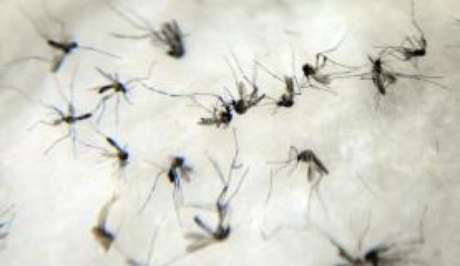
[ad_1]
Across Brazil, several federal and municipal programs are battling Aedes aegypti outbreaks. In the streets, health surveillance officers inspect the streets and buildings to prevent the reproduction of dengue, chikungunya and zika transmitters. However, these actions may not be enough if prevention is not done in-house.

Yellow fever is transmitted by the mosquito Aedes aegypti
Photo: Agência Brasil
The Ministry of Health has registered, until November this year, more than 228 000 cases of dengue, more than 82 000 cases of chikungunya and more than 7 000 cases of zika in Brazil. The diseases are caused by the same vector.
The Ministry's data also show a reduction in the three diseases transmitted by Aedes aegypti between January and October 2018 compared to the same period in 2017. However, states such as Rio de Janeiro, São Paulo and Rio Grande do Norte have presented an expressive increase in cases of the three diseases.
The fight is also done at home
It is important that the population is united to play its role in the fight against mosquitoes and to take care of home care. As the life cycle of Aedes aegypti lasts about 7 to 10 days, just do preventive work at least once a week.
To prevent the breeding of mosquitoes, simple actions are enough, but they make all the difference. See, practice and share the tips for your home to be free of Aedes aegypti breeding grounds and the diseases that it transmits. Dispose of rain bottles, plastic bags and old tires and cover all containers with water such as water tanks, barrels and vats. Clean and fill the pots with plant pots with sand to the brim, wash them with water and soap the animal water pots. If you find abandoned buildings and unused pools, call the town hall or the administration immediately.
Dengue
The symptoms of dengue are: sudden high fever, headache, pain in the body and joints, nausea and vomiting. Red spots on the body and itching may also appear. In its most severe form, there is the presence of intense and continuous abdominal pain or pain in the palpation of the abdomen, persistent vomiting, accumulation of fluid (ascites, pleural effusion, pericardial effusion) , mucosal bleeding or other bleeding.
Chikungunya
The symptoms resemble those of dengue fever and usually appear 2 to 12 days after the bite of a mosquito, a period called incubation: a week of infection. Sudden fever, constant headache, red patches on the body, severe itching and severe joint pain, accompanied by swelling, are other symptoms of the disease.
Zika
Symptoms are difficult to identify, but in some cases zika can cause limb paralysis and muscle weakness (Guillain-Barré Syndrome). Transmission of the disease can also occur from mother to child during pregnancy, with risks of causing neurological problems to the child, such as microcephaly. The symptoms are: "vermilion" throughout the body, with a lot of itching after a few days; low fever, often unheard; conjunctivitis (red eyes) without secretion; myalgia and headache; and joint pain.
Source link